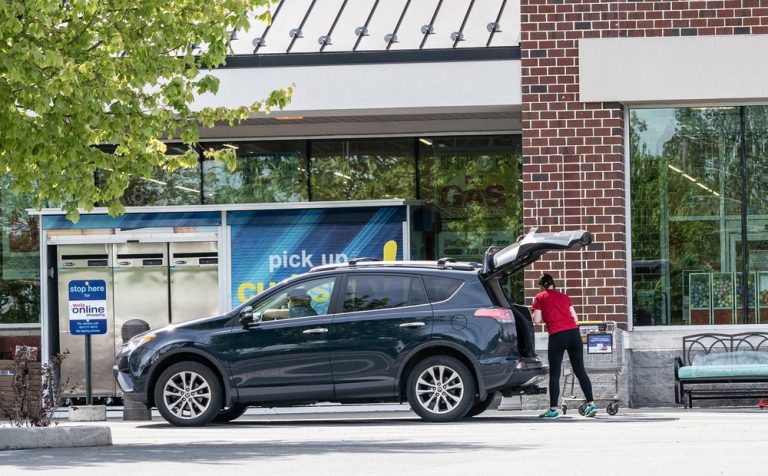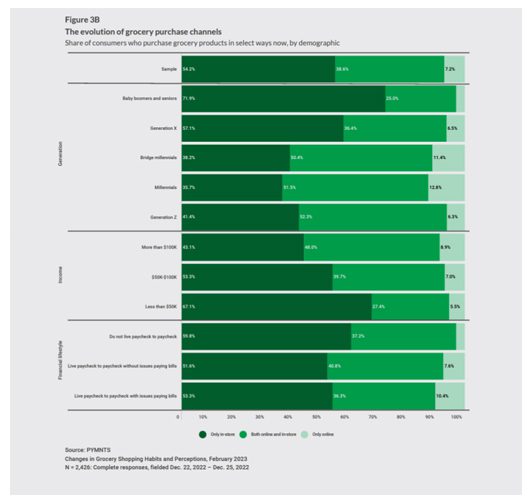Grocers Without Strong Online Presence Risk Losing Millennial Shoppers

While 2023 might be the “year of groceries” compared to consumers’ general pullback in eating out, that doesn’t mean the sector has had it easy. Manufacturer price hikes have put small and independent grocers under particular strain, and these grocers are also bearing the brunt of consumers’ inflation concerns.
All in all, there are indications that traditional grocery stores could suffer the same fate as department stores’ death by a thousand cuts. Two of those slices — categories where market share losses are particularly notable — include personal care products and pet brands. This shift away from in-store grocers is reflected in PYMNTS’ “Changes in Grocery Shopping Habits and Perceptions” and seems to especially impact bridge millennials, millennials and members of Gen Z.

These three age cohorts either buy the majority of their groceries exclusively online or in some combination of online and in-store. Millennials are likely to shop online only for groceries, as 13% do so. However, the overall divide between younger and older generations is dramatic when it comes to brick-and-mortar food shopping, as Gen Z outpaces baby boomers and seniors four to one in online grocery purchasing.
Smaller chain and independent grocers are catching up to sector giants in their digital offerings by either joining aggregators or creating their own infrastructure. Brick-and-mortar players of all sizes, as well, have been fighting this trend by offering some digital conveniences such as scanners and self-checkout in-store.
The industry still has a long way to go, though, especially when compared to retail’s online offerings. This is certainly true regarding free delivery, a cost many grocers struggle to absorb. However, these efforts seem to pay off for grocers expanding their digital presence in recent months, as digital engagement with the sector rose 27% last year, up from 11% the year before. Grocers offering curbside have also seen success, with some seeing as much as a 50% new customer return rate with the service.
Grocers may consider enhancing and maintaining robust digital channels to gain and hold market share, especially with younger consumers. Those not making digital inroads to meet millennials, bridge millennials and Gen Z where they shop may risk getting left in the dust.